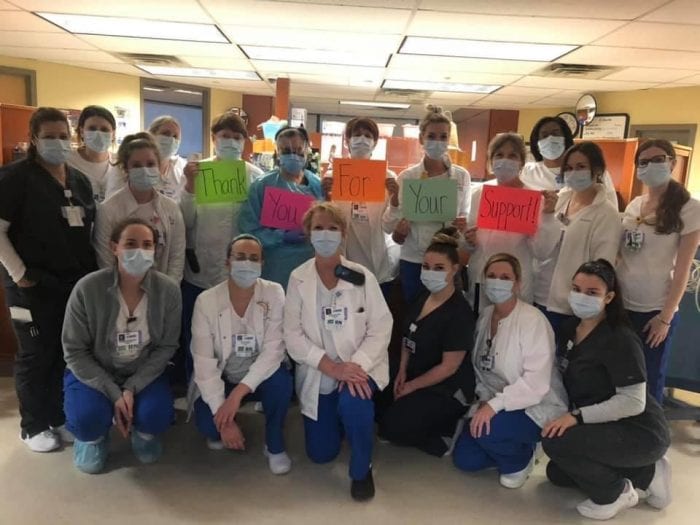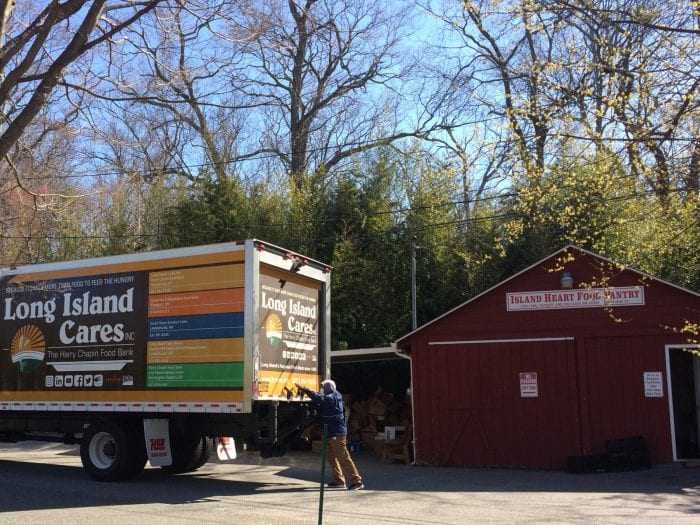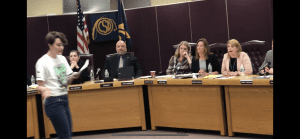By Rich Acritelli
“When you can’t control what’s happening, challenge yourself to control the way you respond to what’s happening. That’s where your power is!”
From the start of the coronavirus epidemic that has hit this nation, this saying has been followed by local nurses Kathy Long and Nicole Flatley. These two hospital workers are at opposite ends of their careers, but share the common goal of helping their patients. Within a medical crisis that rivals and surpasses all other illnesses in recent history, COVID-19 has left a mark on the nation that will never be forgotten. Currently, at the time of reporting, there are well over 400,000 cases of this virus with close to 13,000 American lives lost. In New York State alone, there are almost 5,500 deaths with close to 140,000 confirmed cases that are growing every day.
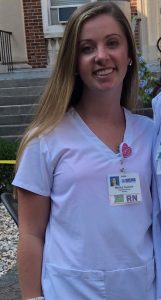
Healthcare workers of every kind are facing extreme health hazards and working an extraordinary number of hours to help save lives and help stem the tide of the virus. Never has any other generation of Americans watched the USNS Comfort dock in New York Harbor to care for local citizens or see the government build field hospitals in Central Park, the Jacob Javits Center in New York City and closer to home at Stony Brook University. Even during times of war, children and young adults were still able to go to school to get an education. Due to the severity of COVID-19, some of the most common parts of our society have changed through online teaching, a practice now seen from one coast to the other.
As a 22-year-old resident of Sound Beach, Flatley has been a nurse at John T. Mather Memorial Hospital in Port Jefferson since August, 2019. It has been less than a year since she graduated from St. Josephs College, but she is now one of the 3.8 million registered nurses nationally battling the virus. For the last eight months, this newly hired employee has flourished into a trusted nursing member of the 3 South team in Mather, one that has been at the forefront for treating COVID-19 patients within Mather.
It is no surprise that Flatley is working long shifts to help men and women of all different ages fight the virus. As her former social studies teacher, I recognized her as a prepared, organized and motivated student willing to do her best within every assigned task. Flatley was a key member of the Rocky Point field hockey team which was amongst the most competitive on Long Island. In school, Flatley’s excellence with her academics enabled her to be placed on the National Honor Society. Armed with a brilliant smile, Flatley enjoys her time with family and friends.
Flatley is a “spunky” well rounded young lady who has the ability to talk to others with an upbeat personality, something she has utilized to care for her COVID-19 patients. Working overtime and in midnight shifts, Flatley said she is extremely thankful for the nurses that have helped guide her during the start of her career. With the staff around her, these nurses help determine any positive and negative coronavirus cases. Mather has seen the wide variation of symptoms, from shortness of breath, fever, diarrhea, and chest tightness. Nurses are covered from head toe in protective gowns and gear with suction and surgical face masks, along with face shields. While she said she has limited experience, Flatley has received an into-the-fryer education that has seen her handle daunting responsibilities at an extremely high level.
Experienced health care worker Kathy Long is the nursing manager for the 3 South Unit. This 30-year nursing veteran nurse and Port Jefferson Station resident said she is extremely proud of her colleagues. During these stressful moments, her nurses have not taken a day off and have worked long hours through the rigors of the crisis. Long said she is extremely thankful for the compassion of her staff who have worked under the most challenging conditions that could be asked of any nurse. Former Athletic Director to St. Anthony’s High School in Huntington and Port Jefferson Station resident Don Buckley has known Long for many years, saying she has outstanding professional qualities and that he views her as a “wonderful, caring, loving nurse, and most of all wife and mother. It was no surprise to us when she became supervisor of 3 South, as she is a natural leader and highly respected.”
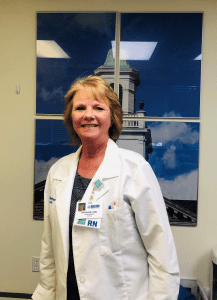
As the senior member of this department, Long was pleased with Flatley’s skills, and that she has shown to be “an advocate for her patients, a critical thinker, and a quick study.”
While Flatley may be a younger nurse, Long said she was pleased with her progress shown through many of these dark moments. As a parent of three boys who are about the same age as many of the younger staff at Mather, she has guided these younger nurses with vital information to get her through the hard days.
For 30 years, Long has observed trying medical conditions, but she maintains that this epidemic is by far the worst situation that she has ever endured as a nurse. The scary part of COVID-19, she said, is that the increased “spike” has not yet hit New York. Every precaution has been taken. In order to keep the contact limited between the patients and healthcare workers, the hospital issued I-Pads to people suffering from COVID-19. They use this technology to speak to the doctors and nurses when they are not in these rooms. The “nucleus” program, as its called, has allowed the patients greater access to those professionals that are helping them and for additional face time to see their loved ones who are unable to visit them. Long said the program has strengthened morale for their patients.
During every major moment that America has faced national adversity, people have always helped each other through trying times. Over the last twenty years, rescue workers spent countless hours at Ground Zero during and after the 9/11 attacks. For the previous two decades, American soldiers have been supported from home as they fought in major battles in Afghanistan and Iraq. Now the next major aspect of patriotism has undoubtedly been observed through the healthcare workers in New York. New York City Fire Department trucks and crews have been placed in front of hospitals cheering the healthcare workers. With a smile, Flatley explained how the local fire departments have blasted their sirens at the same time to show appreciation to local hospitals that are on the “front lines” of the virus response.
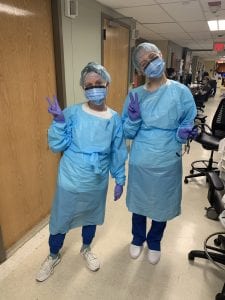
As a senior nurse, Long said she is incredibly thankful of the outside aid sent to this hospital from restaurants like Ruvo East, the Port Jeff Lobster House and Rocco’s Pizza, just to name a few. She would like to recognize the local families that have also brought food for her staff and the many appreciation cards from children from as far away as West Sayville. These colorful notes by the kids have highlighted the many sacrifices all hospital workers are conducting on a regular basis for the COVID-19 patients. Many of these pictures are hung in an populated area in the hopsital, serving as a vital morale booster for all the hospital staff. It is possible Flatley will serve in the same role as Long in the future, supporting her staff as a pillar of nursing expertise and understanding.
Flatley has grown immensely during this mounting crisis. One of the greatest concerns that she deals with at her job is the “unknown” of this medical condition. The nurses continually work under unyielding pressures with no known cure, no timetable for it to end, and no shift ever being the same. Always a young lady with a can-do attitude, Flatley’s mother Jill describes her sheer pride in her daughter by saying, “I know it’s your job, but your kindness and courage to do it inspires me beyond words. I can tell you are making an immense difference in many lives. Love you and stay safe.”
Thank you to the doctors, support staff and nurses like that of Long and Flatley that have strenuously labored with their peers to provide love and comfort to the victims of this virus.
Rich Acritelli is a social studies teacher at Rocky Point High School and an adjunct professor of American history at Suffolk County Community College.

